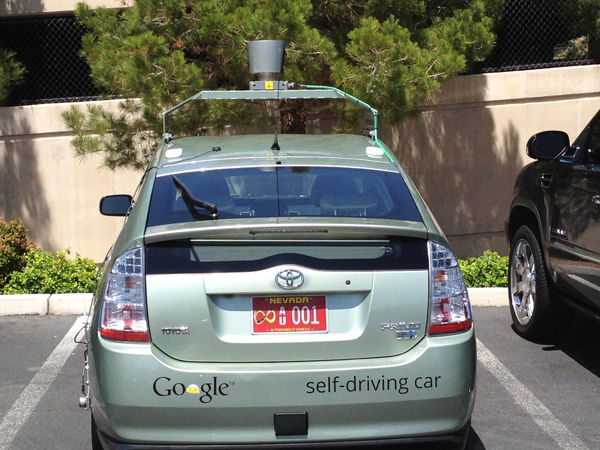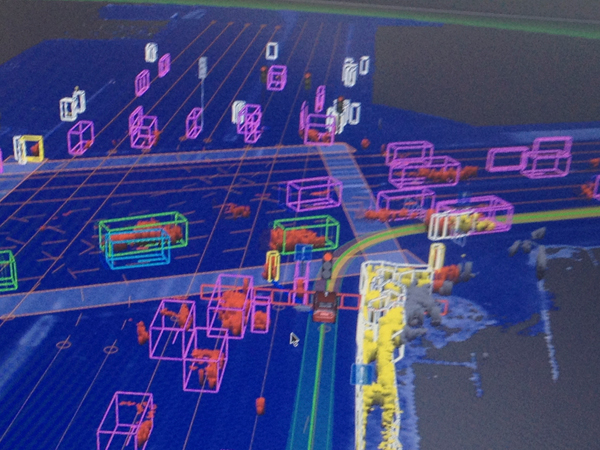Self-Driving Cars Alter Road Rules

The Nevada Department of Motor Vehicles announced Monday (May 7) that it issued the world's first license to a self-driving vehicle – to Google, for the company to test its autonomous cars. The news garnered plenty of attention, so many people already know some of the rules Google will have to abide by, such as having two people in the car at all times. InnovationNewsDaily asked Nevada DMV spokesman Tom Jacobs for more detail on how robot cars will change the rules of the road.
For now, Nevada's new regulations for auto-cars are just tweaked versions of the usual driving laws. The new legislation is for companies that want to test self-driving cars, not citizenry who want to hop into their own robot cars. In the future, when the testing phase is over, driving laws will need more radical rethinking. Nevada officials are starting to think about those laws, but haven’t made any decisions yet, Jacobs said.
If a self-driving car gets in an accident now, the person in the driver's seat is responsible, and Nevada's current laws ensure there will always be someone there. In the Google car, the person in the driver's seat can always override the computer by touching a button on the steering wheel. Jacobs likened the feature – and the laws surrounding it – to cruise control. "If you're on cruise control when there's an accident, who's responsible?" he asked rhetorically.
Self-driving cars in Nevada now need to have insurance that meets the same minimum as human-driven ones, Jacobs added.
In the future, self-driving cars might not need anybody inside. A taxi company could send an empty cab to pick people up at their houses, for example. People might also be able to send text messages behind the wheel or ride while inebriated. Nevada's lawmakers yet haven’t made any decisions about those scenarios, however. "That's so far down the road," Jacobs said. He thinks for the next two generations of the technology, autonomous cars will still need someone behind the wheel who's "at least somewhat attentive."
Nevadan lawmakers envision that the licensing for consumer drivers of autonomous cars will look something like motorcycle licensing, requiring extra training and an endorsement on the card.
As for when how Nevada will know the testing period is over and the state is ready for laws not just for testing robot cars, but for everybody to drive them – that's out of the DMV's hands. Whether Google's or any other company's autonomous cars are ready for consumers will be a federal-level decision, Jacobs said.
Get the world’s most fascinating discoveries delivered straight to your inbox.
Nevada's newest laws, which passed in March, are open to any company that wants to test self-driving cars anywhere in the state. The company just needs to submit an application and earn DMV approval. Nevada's extreme weather and varied terrain, from flashy Las Vegas to quiet desert highways, are great for test-drives, Jacobs said.
So far, only Google has applied. The company lobbied Nevada for an explicitly legal testing ground last year. Before that, it sent its cars out in California, while laws about robot-car fender-benders and insurance remained fuzzy.
Jacobs himself has taken a ride in a Google car, sitting behind the driver's seat with a colleague while two Google engineers manned the front. "I could not tell when it was in autonomous mode and when the guy was driving. It was really that smooth," he said.
He noted one work in progress in the car he saw. It needs a human to drive it along a route before it can trace that route on its own. "Mapping needs to occur," he said. "When the car ran out of map, a female voice would come on that says, 'Please drive.'"
"That's what we do with our tests," Jay Nancarrow, a Google spokesman, told InnovationNewsDaily. He couldn't comment on whether Google car owners in the future might be able to simply download a route from Google maps. Right now, the company is focused on testing and not on what will work in the market, he said.
This story was provided by InnovationNewsDaily, a sister site to LiveScience. You can follow InnovationNewsDaily staff writer Francie Diep on Twitter @franciediep. Follow InnovationNewsDaily on Twitter @News_Innovation, or on Facebook.



